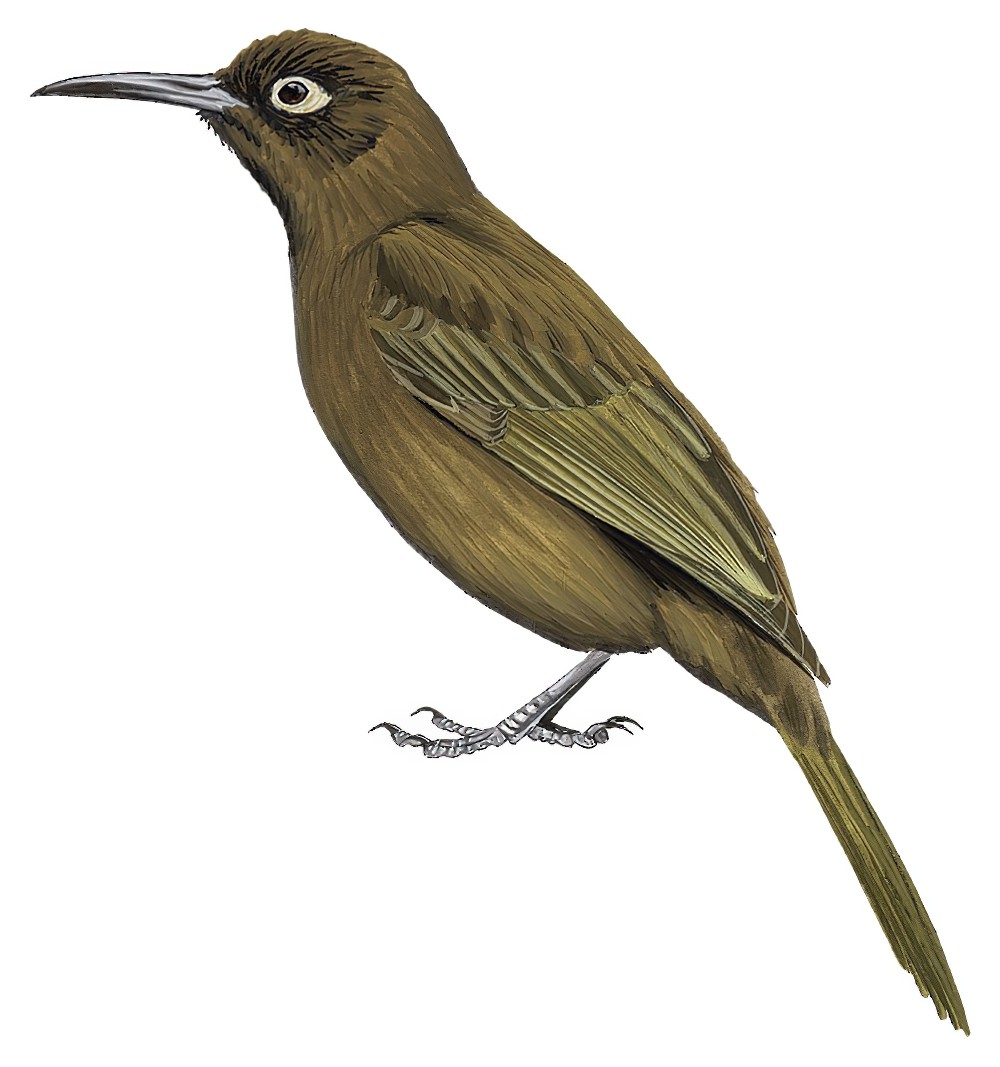Bismarck Honeyeater / Vosea whitemanensis

Bismarck Honeyeater
SCI Name:
Protonym: Vosea whitemanensis Am.Mus.Novit. no.2001 p.2
Taxonomy: Passeriformes / Meliphagidae / Vosea
Taxonomy Code: bismel1
Type Locality: Wild Dog Range, Whiteman Mountains, central New Britain, Bismarck Archipelago.
Author: Gilliard
Publish Year: 1960
IUCN Status: Near Threatened
DEFINITIONS
VOSEA
(Meliphagidae; Ϯ Bismarck Honeyeater V. whitemanensis) Charles Redfield Vose (1890-1957) US businessman, insurance magnate, explorer, sponsor; "In 1958 and early 1959 the writer and his wife made a representative collection of birds in the Whiteman Mountains, central New Britain. One honeyeater discovered near the summit of the range is so unusual that it seems necessary to erect a new genus for it. VOSEA, NEW GENUS. ... TYPE OF THE GENUS: Vosea whitemanensis, new species. Vosea whitemanensis, new species. ... Judging from general appearances, this dark, plain-colored, long-billed honeyeater probably belongs near Melilestes and Melidectes. From the former it differs by having the culmen less ridged, by having the area under and behind the eye naked, not thickly feathered, and by having the tarsal envelope laminiplantar in form, not booted. From Melidectes it differs by having a rounded, not graduated, tail, and by having the lateral feathering at the base of the maxilla not reaching the nostril. From both Melilestes and Melidectes it differs by lacking the dense tuft of feathers on the rump and flanks. Vosea whitemanensis differs from Lichmera by being very much larger and by being unpatterned and without a trace of the contrasting white and silvery white post-ocular and/or auricular feathering usually found in Lichmera ... and by having a naked area under the eye which is usually lacking in Lichmera. ... In conclusion, Vosea whitemanensis seems no more nearly related to Guadalcanaria than to Melilestes, Melidectes, or Lichmera bougainvillei. In my opinion, therefore, it should stand monotypic along with at least two other birds from the oceanic island of New Britain, Habropteryx and Ortygocichla. ... This remarkable new bird is named in honor of Charles R. Vose, a generous friend of exploration who recently lost his life in Alaska." (Gilliard 1960). This bird was formerly known as Gilliard's Honeyeater or Melidectes.
whitemanensis
Whiteman Mts., New Britain, Bismarck Archipelago, Papua New Guinea.
UPPERCASE: current genus
Uppercase first letter: generic synonym
● and ● See: generic homonyms
lowercase: species and subspecies
●: early names, variants, mispellings
‡: extinct
†: type species
Gr.: ancient Greek
L.: Latin
<: derived from
syn: synonym of
/: separates historical and modern geographic names
ex: based on
TL: type locality
OD: original diagnosis (genus) or original description (species)












